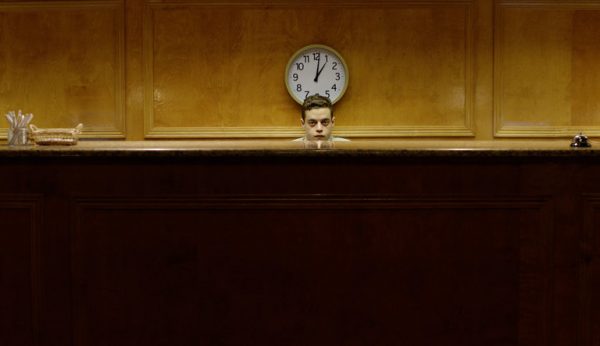Tribeca Film Festival Review: “Buster’s Mal Heart”
May 7, 2017
“Two roads diverged in a yellow wood,
And sorry I could not travel both
And be one traveler, long I stood
And looked down one as far as I could.”
– Robert Frost, “The Road Not Taken”
In the dark Montana woods, a lone man stands in between two roads. But, he doesn’t take the one less travelled by. He chooses to take both of them, and that is what makes all the difference.
“Buster’s Mal Heart,” the second film of director Sarah Adina Smith (“The Midnight Swim”), is a psychological thriller that opens audiences to the turmoil of a monotonous existence and the severe cost when it begins to affect the mental state. It stars Emmy-winner Rami Malek (“Mr Robot”) on a wild ride from beginning to end, proving to be a film that will keep audiences glued to their seats for its entire duration.
Audiences follow Malek’s character in two separate timelines. Buster, as the authorities call him, is a mountain-man on the run who survives the brutal winter by breaking into vacation homes. However, he doesn’t trash them—he cleans himself, eats, and uses the radio to preach about the coming inversion at the turn of the millennium. When the park rangers find him, he flees to the next location to continue the same cycle.
But at one time or another, “Buster” was actually Jonah—a man struggling to support his family. Forced to work the night shift at a small motel, Jonah barely has time to spend with his shy wife (Kate Lyn Shiel) and care for his precocious little girl (actor), his eyes constantly bloodshot from fatigue. He is a man bludgeoned by his daily life, and he constantly yearns for something more for himself and his family. However, his life changes when he meets a prophetic drifter (DJ Qualis) who turns his view of the world upside-down.
The film thus follows Jonah’s transformation from a hard-working husband and father to fugitive mountain-man, observing the moments where his job begins to play with his psyche in dangerous ways. Smith did an excellent job of capturing this methodical yet shocking change in Jonah, portrayed in a captivating way through only simple dialogue and long, drawing moments of silence where all you may hear is the static of the television or the hum of a hotel radiator as Malek stares blankly at nothing in particular—contemplating the universe and his small place in it.
But there’s a third depiction of Jonah—a version of himself floating aimlessly in the vast ocean. This appearance seems to resemble the biblical prophet of the same name. However, as the three timelines begin to intertwine, it is progressively harder to tell what is reality and what is not. If anything, Smith seems to be leading us to experience our own taste of madness. Jonah is a man split in half, and, just as he cannot decipher reality, audiences cannot either.
Known for his Emmy-winning role in “Mr. Robot”, fans of Malek will not be disappointed with his performance. This film marks his first feature lead, and he commands the screen in an unsettling yet curious way that complements his character perfectly. Malek is the only body on screen for a majority of the movie, able to captivate regardless of his environment—whether that be floating in the vast ocean or standing in the middle of an abandoned hotel hallway. He mesmerizes through expression alone, and it is his eyes that truly tell the story of his descent to madness during the film. They hold that glimmer of hope that quickly fades into a look of fear.
“Buster’s Mal Heart” leaves audiences with more questions than answers. Buster is a man plagued with madness, but is he really to blame for it? Or is his madness simply the product of the world we live in—the realization of his constant pattern in the machine. A psychological, thought-provoking experience from beginning to end, this film is unafraid to explore the depths of the mind and captivate while doing so.









